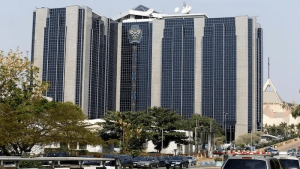Why Lebanon is gearing up for a record number of tourists
(CNN) — Lebanon isn’t a destination most people associate with summer vacations.This is partly due to understandable ignorance — most people don’t realize that Lebanon is home to 240 kilometers of azure Mediterranean coastlines and forested mountain ranges culminating in the tallest peak in the Levant.The Middle Eastern country’s food culture, founded on some of the world’s most flavorful fresh produce, is also worthy of mention.Despite these strong points in its favor, Lebanon’s well-documented troubles have prevented tourism from reaching its full potential here.Mention you’re going to Lebanon for a vacation and a whole generation’s jaw will drop. For them, the word “Beirut” still connotes the sniper fire and kidnappings that haunted the country during its bloody, 15-year civil war. Nearly 30 years have passed since the end of the conflict, but sectarian angst hasn’t gone away, and plenty of factions still resort to violence to settle disagreements. What’s more, the war in neighboring Syria and the resulting massive influx of refugees has destabilized Lebanon’s economy and led to damaging regional political spats. While such challenges have undoubtedly impacted visitor numbers, the allure of the country’s natural beauty has proven strong for millennia.From pre-Biblical times through to the country’s touristic heyday in the 1960s, and right through to the 21st century, curious travelers have sought out Lebanon.Today, capital city Beirut’s nightlife and quirky museums attract more tourists than ever before, while its summer festivals — this month’s Cedars International Festival culminating in a performance by Andrea Bocelli — also draw in big crowds.After drawing in just under two million visitors last year, the country is hoping for a new record in 2019.Ancient treasuresThe Temple of Bacchus is inscribed as an UNESCO World Heritage site.Muhammed Ali Akman/Anadolu Agency/Getty ImagesTravel in Lebanon isn’t always easy, but minor discomforts and uncertainties — the worst of which are bad traffic and dirty streets — can make for interesting stories. In a world where cities are increasingly indistinguishable from one another, and the rough edges of individual countries’ cultures are squaring off, Lebanon remains uniquely itself. The first traveler in recorded history, the Sumerian king Gilgamesh, chose Lebanon’s cedar forest as his destination. “The cedars district is a very important tourist attraction because it symbolizes the beauty of nature that can be found in Lebanon,” says Mira Tawk, manager of the White Cedar Hotel and Resort in Bcharre, the gateway to the most magnificent of Lebanon’s two cedar nature reserves. The oldest trees in the forest, known as the Cedars of God, have been growing for over 2,000 years, and the thin mountain light filtering through the feathery boughs feels almost magical.On the other side of the mountains, in the town of Baalbek, the Temple of Bacchus is perhaps the best preserved Roman site in the world. Featuring 19-meter-high pillars and exquisite ornamental reliefs, the temple and its neighboring shrines have stood here for at least 2,000 years, although the city has welcomed visitors for much longer than that. Pilgrims from all over the Levant, Mediterranean, and beyond have come here since well before Biblical times, paying their respect to various incarnations of the sun god (Baal, Helios, Jupiter). Centuries after the Romans constructed their temples at Baalbek, the Mamluks — Muslim slave kings from Egypt — made the city of Tripoli, in today’s north Lebanon, their provincial capital.Now, Tripoli’s Mamluk architecture remains the finest example of the genre outside of Cairo. Built in the characteristic Mamluk urban aesthetic of alternating black and white stone, with inscriptions in Arabic calligraphy, Tripoli’s 14th-century Al-Nouriya hammam (bath house) and madrasa (school), Mansouri Great Mosque, and Khan al-Khayyatin covered stone market are visually striking, seldom visited by travelers, and absolutely unique.Sand and snowLebanon’s iconic Sporting Club Beach has been around since the 1960s.Kaveh Kazemi/Getty ImagesWhen the Gulf oil business started yielding serious returns in the 1950s, Arab petrodollars kick-started Lebanon’s first modern tourism industry. Resourceful Lebanese launched beach clubs in Beirut and along the coast such as the Sporting Club Beach, which is still operating. And skiing in the Middle East sounds like a gimmick until you arrive in the mountains and realize these are no bunny slopes. Around 90 minutes from Beirut, Mzaar Kfardebian, also known as Faraya, is home to three lift systems that ascend to mountains steep enough to challenge technical skiers. Skiing here harkens back to a time when you didn’t have to take out a second mortgage to fund a winter vacation (week day lift tickets are only $30), and slightly rickety chairlifts are operated by jovial chain-smoking attendants.The futuristic optimism of the mid-20th century can be seen in the wildly ambitious architecture of the era. In Tripoli, Oscar Niemeyer’s International Fairground is an example par excellence of the mid-century modernist vision of the future; the fact that it lies unfinished to this day is a physical embodiment of how Lebanon’s civil war war cut short the country’s progress. The site’s brutalist concrete structures, often totally deserted save for the occasional evening jogger, undulate across 10,000 hectares and include a convention hall, experimental sound dome, helipad, as well as a restaurant on top of a tower.Music and arts sceneBaalbek International Festival — the oldest cultural event in the Middle East.AFP/Getty ImagesMusic and arts festivals are at the heart of today’s summer tourist season, far and away the most popular time to visit Lebanon. Now, bigger acts are making these festivals destinations in themselves. “Things have changed since we got Shakira and Andrea Bocelli this year,” says May Chidiac, Lebanon’s Minister of State for Administrative Development, at this year’s festivities. “These are names that people would travel from all over the world to see.” The Andrea Bocelli concert sold out in less than two days; organizer MP Sethrida Geagea had to scramble to install another row of seats for politicians and notables who hadn’t booked quickly enough.For all its charm, Beirut isn’t a city with a myriad of world-class tourist attractions. Rather, it’s a place whose vibe you want to soak up. In other words, you’ll want to linger over dinner and drinks. The nightlife neighborhood au courant is still Mar Mikhaël, where restaurants like Baron and Maryool serve vegetable-forward Ottolenghi-style plates to a crowd of diplomats and aid workers. After dinner, the scene shifts to Anise, where bartenders mix strong, herbaceous cocktails until late.Lebanon’s ho-hum museum scene was rocked by the 2013 opening of the MIM Mineral Museum at the Université Saint-Joseph. Here brilliant crystals, precious metals and stones, and rock formations from all over the world are presented in subtle lighting to bring out striking neon colors and otherworldly shapes that seem like they were designed in a 3D printing studio rather than kicked up from the dirt. The life’s passion of Lebanese entrepreneur Salim Eddé, it’s one of the most important collections of gems and minerals in the world, and certainly the most tastefully presented. Stephanie d’Arc Taylor is a journalist, writer, and the co-founder of the social impact business Jaleesa. She is on Instagram @zerodarctaylor.




